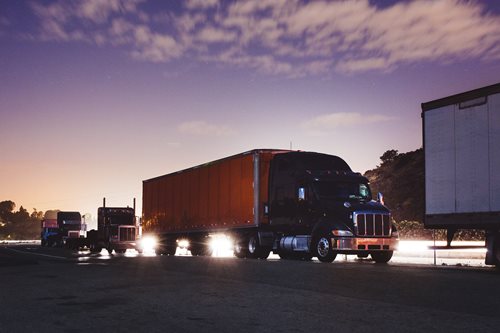
It is NOT fun. It takes up our time. It’s usually not convenient to do and if something is wrong it takes even more time to get it right. From sliding our tandems or fifth wheel to going back to the shipper to have the load reworked, it can be a huge chunk of time. Time we usually do not have. Yet weighing freight is something we sometimes have to do as professional drivers. Here are a few reasons why we should do it.
IT IS THE LAW
Well, actually scaling our loads isn't the law, but having legal axle weights is. The fines for being overweight on your axles or over gross for the entire vehicle can be quite hefty. I am proud to say I have never received an overweight fine, but that is because I scale my loads and make sure everything is legal.
We know the basic formula is 12,000 lbs on the steers and 34,000 lbs on the drives and tandems. Of course, these are just basic numbers, every state has Its own rules as far as axle weights, and these can be found in the front of any Trucker Atlas. Following the basic numbers though will keep you legal in all states. Just don't forget length laws when moving your tandems. Also remember that just because a state may allow 20, 000 lbs on the steers, doesn't mean your front axle or tires can handle that weight. Always check your tires and truck for weight ratings.
IT BRINGS PEACE OF MIND
When you weigh your freight, and you know the weights are legal, coming up to a scale house or port of entry isn't quite as worrisome. You can pull through with confidence, knowing that your weights are legal and unless you get pulled around for an inspection, it should be an easy pass. I always put the scale ticket on my dashboard so the Scale Master can see it. I don't know if that actually does any good, but if they see it, maybe they will think to themselves. "He scaled it, so he must have taken the time to get it right." Maybe that is just me being hopeful, but it's not really hurting anything, so why not?
IT IS EASIER THAN GOING AROUND
I am not judging here. Years ago I was pressed for time due to a family member being ill. My mother was in her final days and I was trying to make it back to Ohio to see her. I picked up a load that was overweight by 1500 lbs or so, all on the drive axle. I was relaying the load to another driver and I knew his truck would be legal. His tractor was set up to haul nitrous, mine was not. So I decided to get around the couple scales that I would have to cross instead of going back and having the product removed.
I will NEVER do that again! I was a bundle of nerves, and in the end, it didn't really save me any time. In fact, it probably took longer to get around those scales than to actually have the extra product taken off. It is easy to find a reason to skip scaling a load, but in my mind, it is never worth it.
A FEW TIPS
1) If you are relaying a load you scaled, leave a copy of the scale ticket for the next driver. If you can't do that, at least write the numbers down on a piece of paper. Be sure to include the fifth wheel position, fuel levels, and type of tractor. All of this information makes a difference and will let the driver know exactly what he is dealing with.
2) Don't just assume the weight on the Bill of Lading is correct. As professional drivers, we know how our trucks feel when they’re loaded correctly. If something feels off, don't be afraid to scale it to be sure.
3) Know the laws for the states you are traveling through. They are all different. Some allow weight exemptions for APU's and some don't. Some have length laws that determine how far back your tandems are allowed to be from your Fifth Wheel. As Professional Drivers, it is our responsibility to know these rules and regulations.
One last thing. Don't be afraid to use a platform scale that doesn't give axle weights. The process is easy.
1. Pull on Steers, write down the weight.
2. Pull on Steers and drives, write down that weight.
3. Pull on Tractor and trailer, write down that weight. That is your Gross
4) Subtract "Steer" weight from "Steer and Drive Weight". This will be the weight on your drives.
5) Subtract "Steer and Drive" weights from your "Gross" weight. This will be your trailer's tandem weight.
I hope this helps. Be safe and Thanks for all you do.